Key Takeaways:
- Understanding the feasibility of dogs sleeping in a wheelchair.
- Insights into the design and comfort of dog wheelchairs for rest periods.
- Best practices for ensuring a dog's safety and comfort while using a wheelchair.
Caring for a pet with mobility issues can be challenging, and many dog owners find themselves asking, "Can dogs sleep in a wheelchair?" This question is particularly relevant for those whose furry friends rely on a wheelchair for movement due to conditions affecting their hind legs, front legs, or both. In this comprehensive guide, we'll explore the various aspects of canine wheelchairs and whether they are suitable for dogs to rest in comfortably and safely.
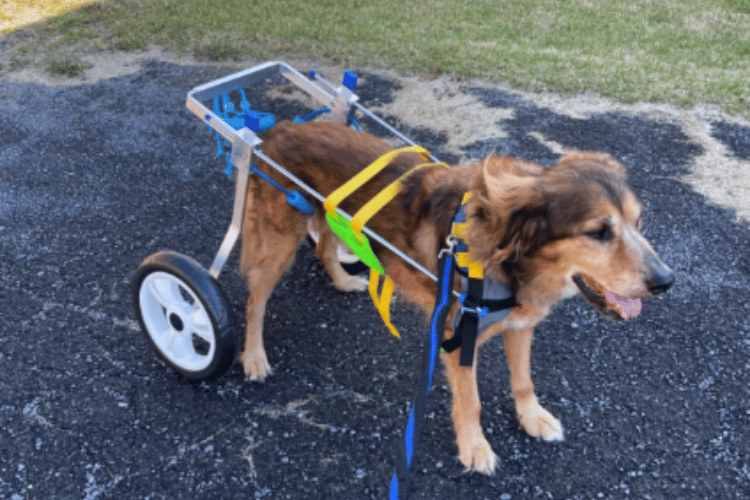
Understanding Canine Wheelchairs
Dog wheelchairs, also known as dog carts, are designed to assist dogs with mobility issues, such as hip dysplasia, intervertebral disc disease, or neurological issues. These devices provide a support system that allows dogs to maintain an active lifestyle despite their limitations. Wheelchairs for dogs come in various sizes and designs, catering to small dogs, large dogs, and every size in between.
The Design of Dog Wheelchairs
A full support dog wheelchair typically consists of a wheelchair frame that supports the dog's body, with straps and harnesses to secure the dog in place. For dogs with rear limb weakness, a small dog wheelchair or a larger one, depending on the breed, supports the dog's rear legs, while a full support wheelchair may be necessary for dogs with more extensive mobility issues.
Sleeping in a Wheelchair: Is It Possible?
Most dogs require a comfortable and flat surface to sleep on, and a wheelchair's structure may not always provide this. However, some dog wheelchairs are designed with the dog's comfort in mind, potentially allowing for short rest periods while the dog remains in the wheelchair.
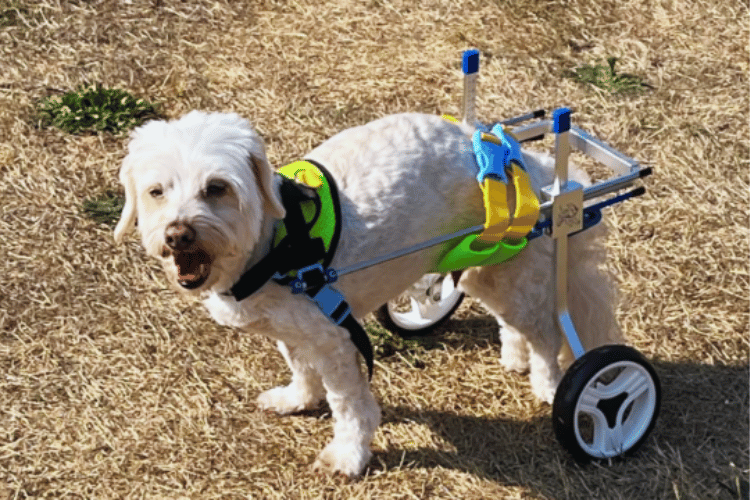
The Comfort Factor
When considering if a dog can sleep in its wheelchair, comfort is a primary concern. A well-designed canine wheelchair should offer full support without causing pressure points or discomfort, even when the dog is stationary. Fully adjustable wheelchairs can be tailored to the dog's specific body shape, enhancing comfort.
Safety Concerns for Sleeping Dogs
Safety is paramount when allowing a dog to rest in a wheelchair. The wheelchair must be stable and secure to prevent tipping or collapsing, which could injure the dog. Additionally, the harness system should not restrict the dog's breathing or cause any distress.
Mobility and Rest: Striking a Balance
While dog wheelchairs are primarily meant for aiding dog moving around, it's essential to balance mobility with adequate rest. Dogs should have the opportunity to lie down and sleep without the constraints of their wheelchair, especially for extended periods.
The Role of Wheelchair Rentals
Wheelchair rentals can be a great idea for dog owners who are unsure if their pet will adapt to using a wheelchair. Wheelchair rentals often come with non-refundable credit card details but provide an opportunity to test a wheelchair's suitability for a dog's specific needs, including rest.
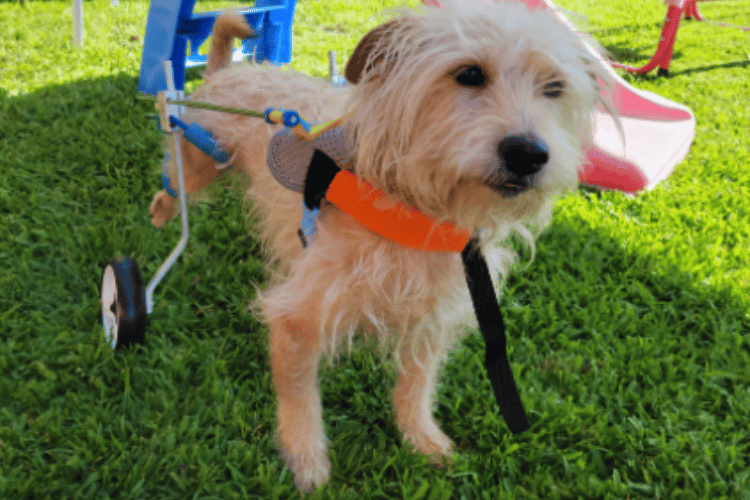
The Towel Test for Wheelchair Candidates
The towel test is a simple way to determine if a dog is a good candidate for a wheelchair. By supporting the dog's body with a towel under its belly, owners can gauge their pet's strength and potential to use a wheelchair effectively.
Canine Wheelchair Types: Front, Rear, and Full Support
Dog wheelchairs vary depending on which limbs need support. Some are designed for just the rear legs, others for the front legs, and full support wheelchairs for dogs with more severe mobility issues affecting all four limbs.
Adjusting to Life on Wheels
For many dogs, adjusting to using a wheelchair takes time, often up to two weeks or more. During this period, it's crucial to monitor how the dog responds to the wheelchair, including its ability to rest and sleep comfortably.
The Importance of Exercise
Even dogs with mobility issues need exercise to maintain their health and well-being. A wheelchair allows dogs with hind legs or front legs problems to continue enjoying long walks and an active lifestyle.
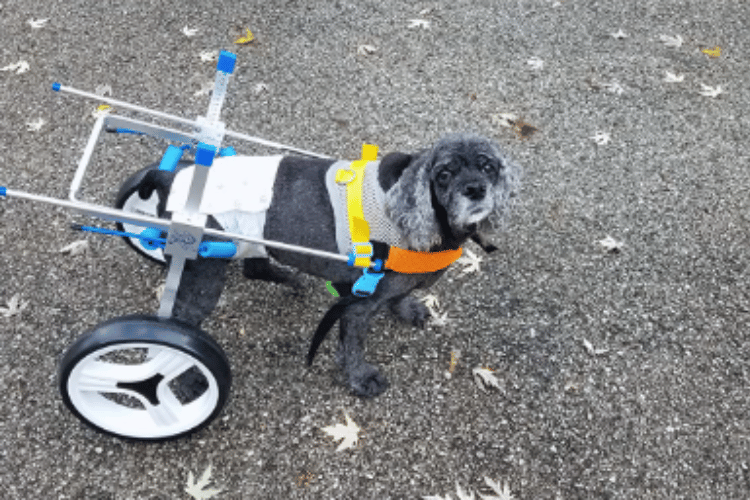
Custom-Built Wheelchairs for Unique Needs
For dogs with specific body types or conditions, such as a German Shepherd with degenerative myelopathy, a custom-built wheelchair may be the best option. These wheelchairs are tailored to the individual dog, ensuring a perfect fit for both activity and rest.
The Impact of Old Age on Mobility
Older dogs often face mobility issues due to old age or conditions like arthritis. A wheelchair can help these senior pets maintain their independence and quality of life, but considerations for their comfort during sleep are essential.
Wheelchair Frames and Comfort
The wheelchair frame is the foundation of the device and must be constructed to offer support while also allowing for the dog's natural sleeping posture. Frames should be lightweight yet durable to ensure the dog's safety during rest.
Harness Systems and Dog Comfort
The harness system of a dog's wheelchair plays a significant role in its overall comfort. Harnesses should be adjustable and padded to prevent chafing and discomfort, which is especially important when the dog is resting.
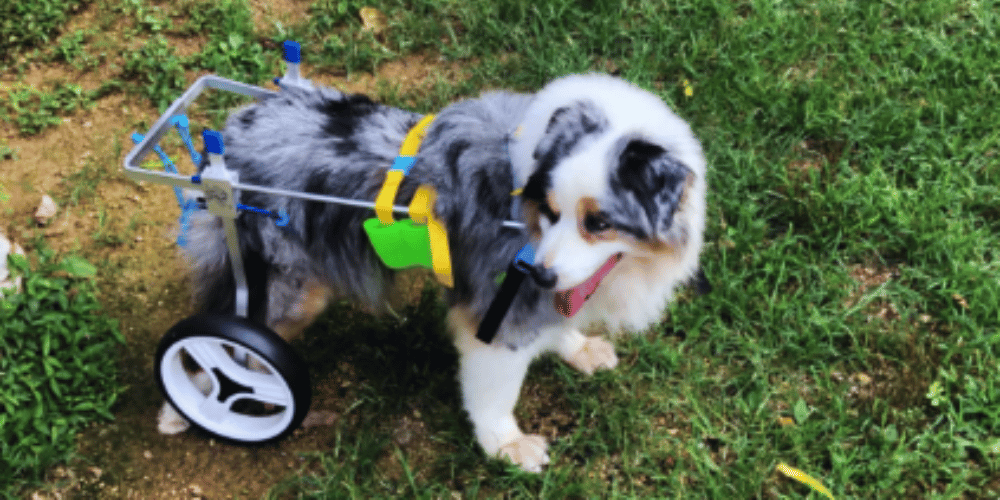
Optimizing Wheelchair Use for Your Dog's Specific Needs
When it comes to ensuring your dog's comfort and mobility, a custom-built wheelchair can be a game-changer, especially for pets with specific needs. For dogs with rear leg weakness, a wheelchair that supports the dog's rear legs can restore a sense of normalcy, allowing them to walk and play with other dogs. It's crucial to select a wheelchair that aligns with your dog's specific body type and condition, whether they need support for just the back legs or both front and back legs. A well-fitted wheelchair can significantly improve your dog's quality of life, enabling them to engage in daily activities with ease and confidence.
For larger dogs, finding the right wheelchair is particularly important due to their size and weight. A small wheelchair designed for a lighter dog won't suffice for a larger breed. The Walkin' Wheels wheelchair is a popular choice that comes in various sizes and is fully adjustable to accommodate different breeds and disabilities. This type of wheelchair ensures that your dog maintains a natural standing position, which is essential for their comfort and health. Remember, while the initial investment in a custom-built wheelchair may be significant, the non-refundable cost is often outweighed by the benefits it brings to your pet's life.
The Significance of Wheelchair Training for Dogs
When introducing a dog to their new walkin wheels wheelchair, training is a crucial step that can't be overlooked. It's not just about strapping the dog in and hoping for the best; it involves a gradual process of acclimatization. Initially, the dog may be hesitant or even scared of the unfamiliar contraption. Owners should start with short sessions, allowing the dog to get used to the feel of the harness and the frame against their body. Positive reinforcement, such as treats and praise, can make these initial interactions with the wheelchair a positive experience.
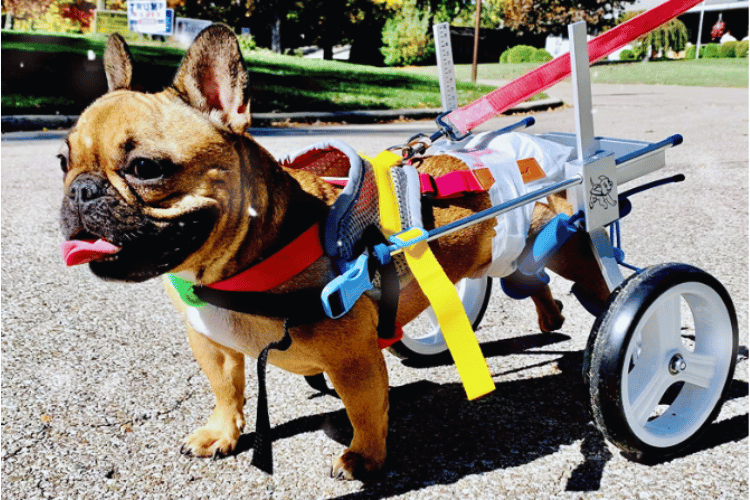
As the dog becomes more comfortable with the presence of the wheel chair, the next step is to encourage movement. This might involve leading them with a favorite toy or walking alongside another dog to provide a sense of companionship and competition. It's important to monitor the dog's body language and ensure they are not stressed or overexerting themselves. With patience and consistent training, most dogs can learn to navigate their environment confidently, allowing the wheelchair to become an extension of their mobility rather than a hindrance.
The Adaptability of Dogs to Wheelchair Life
When a dog's rear legs begin to fail, adaptability becomes a key factor in maintaining their quality of life. Dogs are remarkably resilient creatures, and their ability to adjust to a dog's wheelchair is a testament to this. Initially, some pets may show hesitation or discomfort, but with patience and positive reinforcement, they often learn to navigate their world anew. Owners can take heart in knowing that their furry friends can continue to enjoy their daily activities, from leisurely walks to spirited playtime with other dogs, all thanks to the support of a well-fitted wheelchair.
Moreover, the adaptability extends to the dog's body, which can benefit greatly from the reduced strain on their limbs. The wheelchair supports the dog's specific needs, allowing for a redistribution of weight and easing the pressure on joints and muscles. This can lead to a happier, more active dog despite their physical limitations. Observing a dog's renewed zest for life as they chase a ball or interact with their environment can be incredibly rewarding for any pet owner, highlighting the positive impact of canine wheelchairs.
Financial Considerations for Wheelchair Investment
Investing in a custom-built wheelchair for your dog is a decision that comes with financial considerations. While the benefits of providing mobility to a pet with disabilities are immeasurable, it's important to be aware of the costs involved. Custom-built solutions often come with a higher price tag due to the labor and materials required to tailor the wheelchair to your dog's specific dimensions and needs. Additionally, these custom solutions are typically non-refundable, making it crucial for pet owners to ensure the correct fit and functionality before purchase.
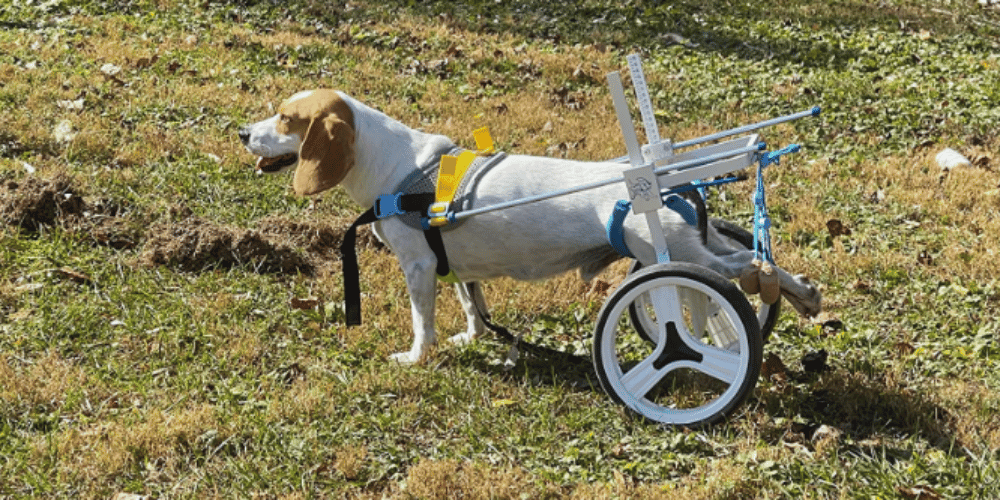
However, there are ways to manage these expenses. Some pet insurance policies may cover a portion of the cost for a dog cart, and there are also charitable organizations that assist with funding for pets in need. It's worth exploring these options to alleviate some of the financial burden. Furthermore, investing in a high-quality, adjustable wheelchair can be cost-effective in the long run, as it can adapt to your dog's changing needs and potentially serve other dogs in the future, should the need arise.
Integrating Wheelchairs into Daily Routines
For a dog's wheelchair to truly enhance their quality of life, it must be integrated seamlessly into their daily routine. This means considering the wheelchair's use not just for outdoor walks but also for indoor activities. Owners should ensure that their home environment is wheelchair-friendly, with ample space for the dog to maneuver without bumping into furniture or getting stuck in tight corners. Rugs and slippery floors might need to be addressed to prevent the dog's rear legs from struggling to gain traction, which could lead to frustration or even injury.
Moreover, the dog's specific needs should dictate the frequency and duration of wheelchair use. Some dogs may benefit from wearing their custom-built wheelchairs for most of the day, while others might only need it for exercise and relief times. It's also essential to consider the social aspects of a dog's life. Interaction with other dogs should be encouraged, as it promotes mental well-being and can lead to a more active lifestyle. However, owners must supervise these interactions to ensure that the wheelchair does not become a source of conflict or injury when playing with other dogs.
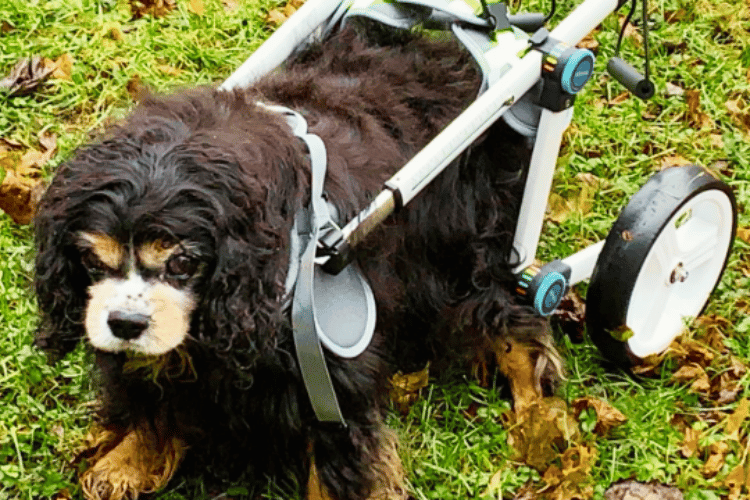
The Evolution of Dog Wheelchairs: From Dog Carts to Advanced Mobility Aids
The evolution of dog wheelchairs has been remarkable, transitioning from basic dog carts to sophisticated mobility aids that cater to various disabilities. Initially, dog carts were simple structures designed to assist dogs with limited mobility. However, as our understanding of canine health and ergonomics has grown, so has the technology behind these devices. Modern wheelchairs for dogs are engineered to provide optimal support for the dog's body, ensuring they can move comfortably and safely. These advancements have made it possible for dogs with disabilities to enjoy a higher quality of life and maintain an active lifestyle.
The latest wheelchairs are not only functional but also customizable to fit the unique needs of each dog. Whether a dog requires a wheelchair for temporary rehabilitation or as a permanent solution for a chronic condition, the options available today are vast. Some wheelchairs even offer the ability to support a dog's front and back legs simultaneously, which is particularly beneficial for dogs with more severe mobility issues. As the industry continues to innovate, we can expect to see even more advanced wheelchairs that will further enhance the lives of our canine companions, ensuring that no matter the challenge, they can continue walking alongside us.
The Role of Front Wheels in Wheelchair Design
Front wheels in a wheelchair provide stability and maneuverability, which are crucial for a dog's movement. However, when it comes to resting, the positioning and cushioning of these wheels can affect the dog's comfort.
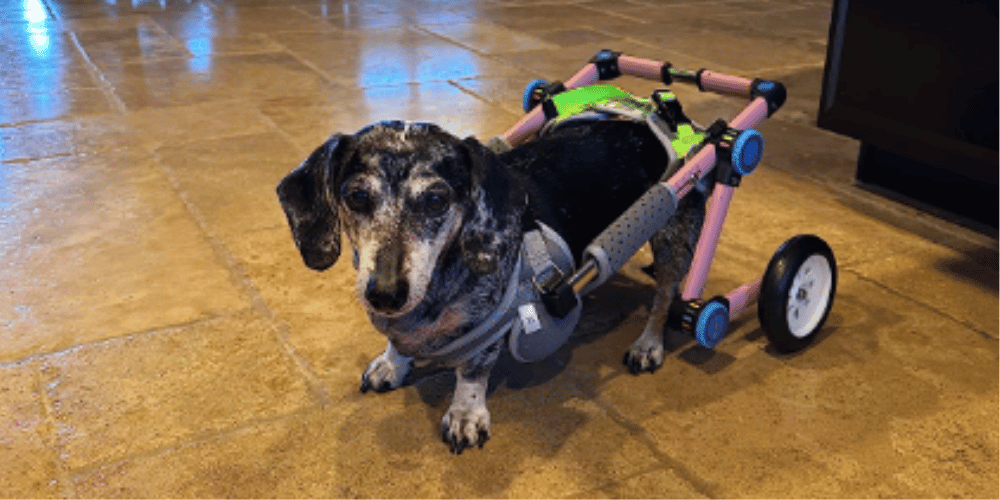
Intervertebral Disc Disease and Wheelchair Use
Dogs suffering from intervertebral disc disease may require a wheelchair to support their weakened spine and limbs. The design of the wheelchair must accommodate the dog's need for a comfortable resting position to avoid exacerbating the condition.
Rear Limb Weakness and Support Options
Dogs with rear limb weakness need a wheelchair that offers adequate support for their back legs. This support must be consistent even when the dog is not moving, allowing for safe and comfortable resting periods.
The Benefits of Fully Adjustable Wheelchairs
Fully adjustable wheelchairs are invaluable for ensuring a perfect fit for the dog's body. This adjustability is crucial not only for mobility but also for providing a comfortable resting position for the dog.
The Psychological Benefits of Wheelchairs for Dogs
Beyond physical support, wheelchairs can offer psychological benefits to dogs by enabling them to engage with other dogs and their environment. This engagement is vital for their mental health and overall well-being.
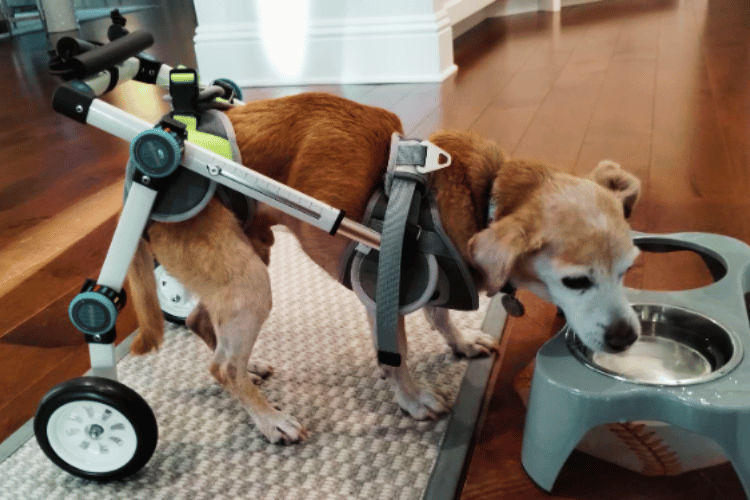
The Importance of Proper Wheelchair Fitting
Proper fitting of a dog's wheelchair is essential for both movement and rest. An ill-fitting wheelchair can cause discomfort, sores, and even injury, making it unsuitable for sleeping.
Male and Female Pets: Wheelchair Considerations
When choosing a wheelchair for male and female pets, it's important to consider their specific anatomical needs to ensure comfort during both activity and rest.
The Significance of Front Support in Wheelchairs
For dogs with front leg issues, front support in a wheelchair is critical. This support must be designed to allow the dog to rest comfortably without putting undue pressure on the front limbs.
Wheelchair Accessories for Enhanced Comfort
Accessories such as padded inserts and cushions can enhance a dog's comfort in a wheelchair, making it more suitable for rest periods.
The Role of Veterinarians in Wheelchair Selection
Veterinarians play a crucial role in helping dog owners select the right wheelchair for their pets, considering both mobility and the ability to rest comfortably.
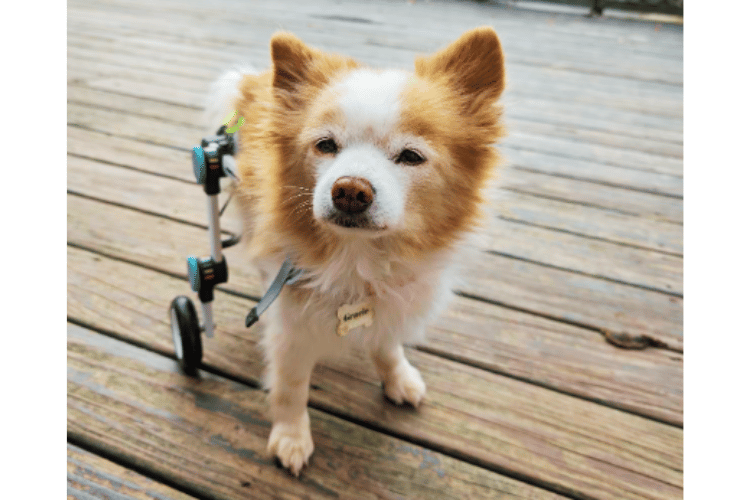
Transitioning to Wheelchair Use: Owner's Role
Dog owners must be patient and supportive when transitioning their pets to wheelchair use. This includes ensuring the dog can rest comfortably in the wheelchair if necessary.
The Impact of Wheelchair Use on a Dog's Lifestyle
Using a wheelchair can significantly impact a dog's lifestyle, allowing for continued exercise, play, and interaction with other dogs, which contributes to a happier and healthier life.
The Financial Aspect of Dog Wheelchairs
Dog wheelchairs can be an investment, but many find the improved quality of life for their pet to be invaluable. Wheelchair rentals and second-hand options can also be considered for those with budget constraints.
The Emotional Connection Between Dogs and Their Wheelchairs
Dogs can form an emotional connection with their wheelchairs, seeing them as a means to freedom and interaction. This bond can make them more receptive to using the wheelchair for various activities, including resting.
The Future of Canine Mobility Aids
Advancements in technology and design are continuously improving canine mobility aids, making them more comfortable and versatile for dogs to use in all aspects of their lives, including sleep.

Summary
In conclusion, while dog wheelchairs are primarily designed for mobility, certain designs and adjustments can make them suitable for short rest periods. The key factors to consider are the wheelchair's stability, comfort, and the safety of the dog while resting. It's essential to consult with a veterinarian to ensure the wheelchair is properly fitted and to monitor the dog's adaptation to the device. With the right wheelchair and proper care, dogs with mobility issues can continue to enjoy an active and fulfilling life.
FAQ Section
Q: Can all dogs sleep in their wheelchairs? A: Not all dogs can sleep in their wheelchairs comfortably. It depends on the individual dog's needs, the design of the wheelchair, and how well it is adjusted to the dog's body.
Q: How long can a dog stay in a wheelchair? A: Dogs should not stay in their wheelchairs for extended periods without breaks. It's important to allow them time out of the wheelchair to rest properly and prevent any discomfort or pressure sores.
Q: Should I get a custom wheelchair for my dog? A: If your dog has specific needs that standard wheelchairs cannot meet, a custom wheelchair might be necessary. Consult with your veterinarian to determine the best option for your pet's comfort and mobility.
Thank you for visiting LegitLists we hope this helps you make a legitimate choice!






